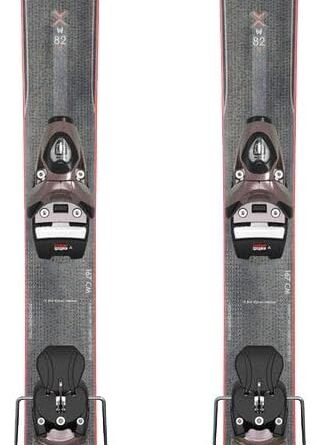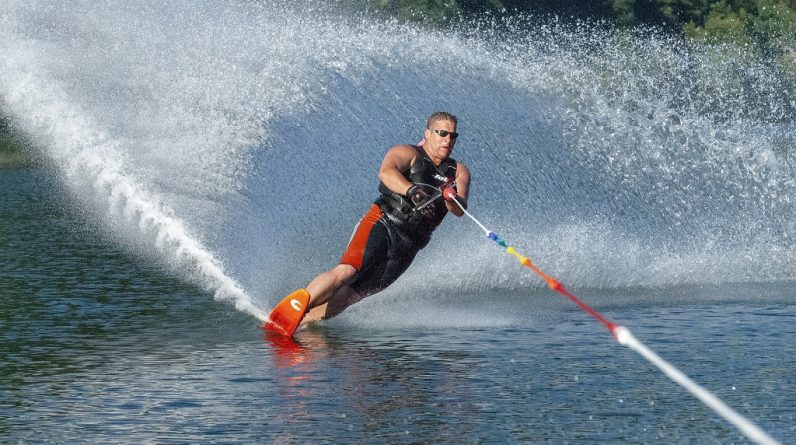
Want to take your water sports game to the next level? Look no further! This article is your ultimate guide to the must-have equipment for beginners in the world of water sports. Whether you’re into surfing, kayaking, or paddleboarding, we’ve got you covered. So get ready to gear up and make a splash with the essential items you need to conquer the waves!
1. Life Jackets
1.1 Types of Life Jackets
When it comes to water sports, safety should always be a top priority. That’s why wearing a life jacket is crucial, especially for beginners. There are several types of life jackets to choose from, including inflatable life jackets, foam life jackets, and hybrid life jackets. Inflatable life jackets are compact and comfortable, as they provide more mobility. Foam life jackets, on the other hand, are simpler and do not require any inflation. Hybrid life jackets combine the best of both worlds, with foam padding and additional buoyancy from an inflatable chamber.
1.2 Importance of Wearing a Life Jacket
Wearing a life jacket can save your life. Whether you’re swimming, kayaking, or participating in any water sport, accidents can happen unexpectedly. A life jacket helps keep you afloat and ensures that even if you’re tired or injured, you can stay above the water. It provides the necessary buoyancy to keep your head and neck above the surface, allowing you to breathe and wait for assistance. No matter how confident you are in your swimming abilities, wearing a life jacket is an essential safety precaution.
1.3 Choosing the Right Size and Fit
When it comes to life jackets, choosing the right size and fit is crucial for your safety. A life jacket that is too big may not provide adequate buoyancy, while one that is too small can restrict your movement and be uncomfortable. To find the right size, check the recommended weight and chest size ranges on the manufacturer’s label. It’s also important to try on the life jacket before purchasing to ensure a proper fit. Adjust all the straps to make sure the life jacket is snug but not too tight.
1.4 Care and Maintenance Tips
To ensure the longevity and effectiveness of your life jacket, proper care and maintenance are essential. After each use, thoroughly rinse the life jacket with fresh water to remove any salt, sand, or debris. Hang it in a well-ventilated area to dry completely before storing. Avoid exposing the life jacket to direct sunlight for extended periods, as it can cause damage to the material. Regularly inspect the life jacket for any signs of wear or damage, such as frayed straps or tears, and promptly repair or replace if necessary.
2. Wetsuits
2.1 Different Types of Wetsuits
For water sports enthusiasts, wetsuits are a game-changer. They provide insulation and protection against the cold water, allowing you to enjoy your activities for longer periods. There are different types of wetsuits available, depending on the water temperature and the sport you’re participating in. Full wetsuits cover your entire body and are suitable for colder water temperatures. Shorty wetsuits, which have short sleeves and legs, are ideal for milder conditions. Spring suits are even lighter and perfect for warmer climates.
2.2 Benefits of Wearing a Wetsuit
Wearing a wetsuit offers numerous benefits for beginners venturing into water sports. Firstly, it provides insulation by trapping a thin layer of water between your body and the suit, which is then warmed by your body heat. This insulation helps keep you warm even in cold water, preventing hypothermia and allowing you to stay in the water for longer durations. Additionally, wetsuits offer protection against sunburn, abrasions, and jellyfish stings, acting as a barrier between your skin and potential hazards.
2.3 Proper Sizing and Fit
To experience the full benefits of a wetsuit, it’s essential to choose the right size and ensure a proper fit. A wetsuit that is too loose will allow water to enter, reducing its insulating properties, while one that is too tight can restrict movement and cause discomfort. Consider your height, weight, and body measurements when selecting the size. It should feel snug but not overly tight, with enough flexibility to move your arms and legs comfortably. Trying on different sizes and brands is recommended to find the perfect fit.
2.4 Caring for Your Wetsuit
To prolong the lifespan of your wetsuit and maintain its performance, proper care is essential. After each use, rinse the wetsuit with fresh water to remove sand, salt, and chlorine. Avoid using hot water or detergents, as they can damage the neoprene material. Hang the wetsuit out of direct sunlight to dry, as excessive heat can degrade the fabric. Regularly inspect the wetsuit for any signs of wear or tear, especially around high-pressure areas like the knees and elbows. Patch any minor damages promptly to prevent further tearing.
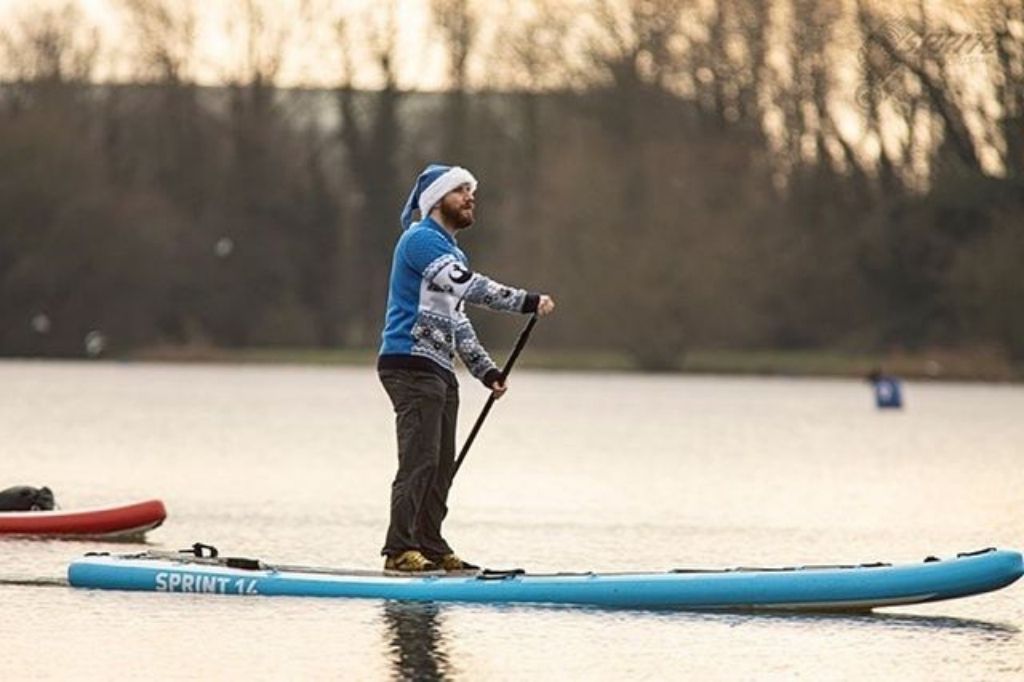
This image is property of standuppaddleboardworld.com.
3. Swim Fins
3.1 Types of Swim Fins
Swim fins are a valuable addition to any water sports enthusiast’s gear. They enhance your swimming skills, increase your speed, and provide a great cardiovascular workout. There are different types of swim fins available, including long-blade fins, short-blade fins, and split fins. Long-blade fins are ideal for fitness training and building leg strength. Short-blade fins offer more maneuverability and are suitable for snorkeling and recreational swimming. Split fins are designed to reduce drag and increase efficiency, allowing for a more effortless and smooth swimming experience.
3.2 Advantages of Using Swim Fins
Using swim fins can greatly improve your swimming experience. They increase the surface area of your feet, allowing you to generate more power and propulsion with each kick. Swim fins also help improve your body position in the water, promoting a more streamlined and efficient swim stroke. Additionally, they provide resistance, which can strengthen your leg muscles and improve overall cardiovascular fitness. Whether you’re a beginner or an experienced swimmer, incorporating swim fins into your training routine can help take your swimming skills to the next level.
3.3 Choosing the Right Size
Choosing the right size swim fins is important for comfort and performance. Fins that are too loose can slip off during swimming, while fins that are too tight can cause discomfort and restrict blood circulation. Most swim fin manufacturers provide size charts, which typically correlate shoe sizes with the appropriate fin size. It’s essential to refer to these charts to find the right fit. When trying on swim fins, ensure that they fit snugly but not overly tight, with a minimal gap between your foot and the fin’s foot pocket.
3.4 Maintenance and Storage
To prolong the lifespan of your swim fins, proper maintenance and storage are key. After each use, rinse the fins with fresh water to remove any salt, sand, or chlorine. Thoroughly dry them before storing to prevent the growth of mold or mildew. It’s important to store swim fins in a cool, dry place away from direct sunlight, as excessive heat can damage the fin’s material. Avoid storing them in a folded or bent position that could compromise their shape. Regularly inspect the fins for any signs of damage, such as cracks or broken straps, and address them promptly.
4. Snorkeling Gear
4.1 Essential Snorkeling Equipment
Snorkeling is a popular water activity that allows you to explore the underwater world without the need for scuba diving equipment. To fully enjoy this experience, it’s important to have the right snorkeling gear. Essential snorkeling equipment includes a snorkel mask, a snorkel, and swim fins. A snorkel mask provides a clear and unobstructed view underwater, allowing you to comfortably breathe through your nose and mouth. The snorkel enables you to breathe while your face is submerged, and swim fins provide propulsion and maneuverability.
4.2 Finding the Right Snorkel Mask
Choosing the right snorkel mask is crucial for a comfortable and enjoyable snorkeling experience. The mask should fit securely on your face, forming a watertight seal around your eyes and nose. It’s important to try on different masks and sizes to find the right fit. Look for a mask with a wide field of view, as this will enhance your visual experience underwater. Consider the type of lens, whether it’s single or double, and the material of the skirt, which should be soft and comfortable against your skin.
4.3 Selecting a Snorkel
A snorkel allows you to breathe while your face is submerged underwater. When selecting a snorkel, choose one that is comfortable to use and suits your snorkeling style. There are different types of snorkels available, such as classic snorkels, semi-dry snorkels, and dry snorkels. Classic snorkels are the most basic and affordable option, while semi-dry snorkels have splash guards to prevent water from entering. Dry snorkels feature a valve that seals when submerged, offering the highest level of protection against water entry.
4.4 Caring for Your Snorkeling Gear
Proper care and maintenance of your snorkeling gear can prolong its lifespan and ensure its performance. After each use, rinse all the equipment thoroughly with fresh water to remove any salt, sand, or debris. Pay attention to cleaning the snorkel, as it can accumulate sand and salt deposits. Allow the gear to dry completely before storing it in a cool and dry place. Avoid exposing the gear to direct sunlight, as it can degrade the materials. Regularly inspect all components for any signs of wear or damage, such as loose straps or cracks, and address them promptly.

This image is property of standuppaddleboardworld.com.
5. Bodyboards
5.1 Different Types of Bodyboards
Bodyboarding is a fun and exhilarating water sport that involves riding waves on a specialized foam board known as a bodyboard. There are different types of bodyboards available, designed to suit various riding styles and skill levels. Entry-level bodyboards are perfect for beginners, featuring a soft top and a more buoyant core for stability and ease of use. Intermediate and advanced bodyboards are constructed with more advanced materials and offer increased performance and maneuverability, allowing riders to perform tricks and turns on more challenging waves.
5.2 How to Choose the Right Bodyboard
Choosing the right bodyboard is crucial for your enjoyment and success in bodyboarding. Consider factors such as your skill level, body weight, and preferred riding style. Beginners should opt for a larger and wider board with a soft top for increased stability and buoyancy. Intermediate riders may prefer a slightly smaller board with more advanced features, such as a crescent tail for better control. Advanced riders can choose a smaller and more high-performance board with a stiffer core for faster and more precise maneuvers.
5.3 Bodyboard Leashes and Fins
Bodyboarding accessories such as leashes and fins are important for enhancing your performance and safety in the water. A bodyboard leash attaches to your wrist and keeps the board close to you, preventing it from getting lost or drifting away. Choose a leash that is comfortable, durable, and of appropriate length for your riding style. Fins, also known as flippers, provide additional propulsion and maneuverability in the water. They help you catch waves and control your bodyboard effectively. Select fins that fit snugly and comfortably on your feet, allowing you to kick efficiently.
5.4 Maintaining and Repairing Bodyboards
To ensure the longevity and performance of your bodyboard, proper maintenance and timely repairs are necessary. After each session, rinse the bodyboard with fresh water to remove salt, sand, and debris. Check the board for any signs of damage, such as dings, cracks, or delamination. Promptly repair any minor damages using a bodyboard-specific repair kit. Store your bodyboard in a cool and dry place, away from direct sunlight, as excessive heat can cause the materials to degrade. Regularly inspect the leash and fins for wear and tear, and replace them as needed to maintain safety and performance.
6. Stand-Up Paddleboards (SUP)
6.1 Benefits of Stand-Up Paddleboarding
Stand-up paddleboarding, or SUP, has gained immense popularity in recent years due to its versatility and health benefits. SUP offers a full-body workout that engages your core, legs, and upper body muscles. It provides a low-impact form of exercise that improves balance, coordination, and cardiovascular fitness. SUP also allows you to explore various water environments, from calm lakes to challenging ocean waves. Whether you’re looking for a leisurely recreational activity or a challenging fitness routine, stand-up paddleboarding has something to offer for everyone.
6.2 Choosing the Right SUP Board
Selecting the right SUP board is crucial for your paddling experience and enjoyment. Consider factors such as your skill level, body weight, and intended usage. Beginners may want to start with wider and more stable boards, which provide better balance and ease of use. More experienced paddlers can opt for narrower and more maneuverable boards for increased speed and performance. Additionally, consider the construction materials, weight capacity, and inflatable versus rigid SUP boards, depending on your specific needs and preferences.
6.3 SUP Paddles and Leashes
SUP paddles and leashes are important accessories that complement your stand-up paddleboarding experience. SUP paddles come in a variety of materials, such as aluminum, fiberglass, and carbon fiber. Lighter and stiffer materials offer better performance, but they also come at a higher cost. It’s essential to choose a paddle with the right length and blade size for your height and paddling style. SUP leashes, similar to bodyboard leashes, tether you to the board, preventing it from drifting away in case of a fall. Ensure that the leash is comfortable and attaches securely to your ankle or calf.
6.4 Storage and Maintenance Tips
Proper storage and maintenance of your SUP board contribute to its longevity and performance. When not in use, store your board in a cool and dry place away from direct sunlight. Excessive heat can cause the materials to warp or delaminate. If you have an inflatable SUP, ensure that it is completely deflated and properly rolled for storage. Regularly inspect the board for any signs of damage, such as dings, cracks, or delamination. Promptly address any repairs using SUP-specific repair kits. Rinse the board with fresh water after each use to remove salt, sand, and debris, and allow it to dry completely before storing.

This image is property of standuppaddleboardworld.com.
7. Kayaks
7.1 Different Types of Kayaks
Kayaking offers a fantastic way to explore and enjoy the water while experiencing the tranquility of nature. There are different types of kayaks available, each designed for specific purposes and environments. Recreational kayaks are great for beginners and casual paddling on calm lakes or slow-moving rivers. Touring kayaks are longer and designed for longer distances and open water exploration. Whitewater kayaks are specifically built to navigate fast and turbulent waters. Sit-on-top kayaks are popular for their ease of use and versatility.
7.2 Selecting the Right Kayak for Beginners
Choosing the right kayak as a beginner is essential for a comfortable and enjoyable paddling experience. Consider factors such as stability, maneuverability, and ease of use. Recreational kayaks are often the best choice for beginners, as they are stable, user-friendly, and provide a good balance between comfort and performance. Look for kayaks with wider hulls and flat bottoms, as they enhance stability and make it easier to maintain balance. It’s also important to consider the weight capacity of the kayak, ensuring it can accommodate both you and any additional gear comfortably.
7.3 Kayak Accessories
In addition to the kayak itself, there are various accessories that can enhance both safety and enjoyment while kayaking. Paddle leashes are essential for preventing your paddle from floating away if you accidentally drop it. They can be attached to your paddle and securely fastened to your kayak. A waterproof dry bag is useful for storing valuables and other belongings, ensuring they stay dry while you’re on the water. Kayak seats and cushions can provide added comfort during longer paddling sessions. Additionally, a kayak anchor can be useful for fishing or when you want to stay in a specific spot without drifting.
7.4 Cleaning and Storing Your Kayak
Proper cleaning and storage of your kayak will help maintain its appearance and prolong its lifespan. After each use, rinse the kayak with fresh water to remove any salt, sand, or debris. Pay attention to cleaning the rudder or skeg, foot pedals, and cockpit area, as these places can accumulate dirt and grime. Use a mild, non-abrasive soap or kayak cleaner to remove stubborn stains or residue. Allow the kayak to dry completely before storing it in a cool and dry place, preferably in a covered area to protect it from sun exposure. It’s recommended to store the kayak on its side or upside down to prevent warping of the hull.
8. Water Skis
8.1 Types of Water Skis
Water skiing is an adrenaline-pumping water sport that combines the thrill of speed with balance and skill. There are different types of water skis available, each designed for specific styles and abilities. Slalom skis are the most common type, designed for carving turns and reaching high speeds. They have one ski for each foot and are suitable for intermediate to advanced skiers. Combo skis are wider and more stable, ideal for beginners and recreational skiers. They come with a single, double, or even triple set of bindings, allowing multiple riders to enjoy the sport.
8.2 How to Choose the Right Water Skis
Choosing the right water skis is essential for your skill level and intended style of skiing. Consider factors such as your weight, ability level, and the type of skiing you plan to do. Beginners should opt for wider, more stable skis with larger surface areas for better balance and control. Intermediate to advanced skiers may prefer narrower skis with more rocker for increased maneuverability. It’s also important to choose the appropriate bindings for your foot size and comfort. Trying out different skis and seeking advice from experienced skiers can help you determine the right fit for you.
8.3 Bindings and Boots
Bindings and boots play a crucial role in your performance and comfort while water skiing. They should securely hold your feet in place and provide adequate support. Adjustable bindings are a convenient option, as they can accommodate different foot sizes and allow multiple riders to use the same skis. When trying on bindings, ensure that they fit snugly but not overly tight, as this can lead to discomfort. It’s essential to choose bindings that are easy to adjust and secure, ensuring a safe and comfortable skiing experience.
8.4 Maintaining and Storing Water Skis
Proper maintenance and storage of your water skis can prolong their lifespan and performance. After each use, rinse the skis with fresh water to remove any salt, sand, or debris. Inspect the skis for any signs of damage, such as chips or cracks in the edges or base. Promptly repair any minor damages using a water ski-specific repair kit. Dry the skis thoroughly before storing them in a cool and dry place. It’s recommended to store them in a ski bag or padded storage rack to protect them from scratches or accidental damage. Regularly check the bindings and boots for any signs of wear or loose screws, ensuring they are in good condition for your next skiing adventure.
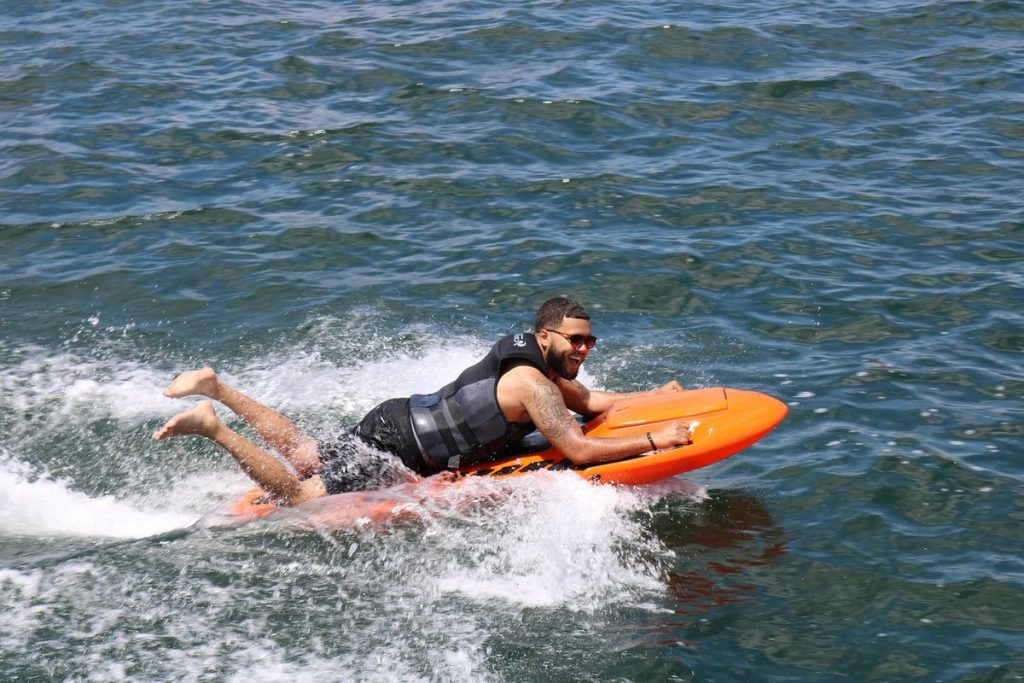
This image is property of dailymom.com.
9. Safety Whistle
9.1 The Purpose of a Safety Whistle
A safety whistle is a small yet essential piece of equipment that should be a part of every water sports enthusiast’s gear. Its purpose is to serve as a signaling device in case of an emergency or when you need to get someone’s attention. A safety whistle produces a loud, high-pitched sound that can be heard over long distances, even in challenging environments or adverse weather conditions. Whether you’re in need of help or simply trying to alert others to your presence, a safety whistle can be a lifesaver.
9.2 Choosing a Reliable Safety Whistle
When selecting a safety whistle, reliability and durability are key factors to consider. Look for a whistle that is made from high-quality materials that are resistant to corrosion and water damage. Whistles made from plastic or stainless steel are popular choices. Ensure that the whistle produces a loud and distinct sound that can cut through ambient noise and carry over long distances. Some whistles come with additional features such as built-in compasses or attachment clips, which can be convenient for water sports activities.
9.3 Attaching and Using a Safety Whistle
To maximize the effectiveness of your safety whistle, it’s important to attach it securely to your gear or person. Many safety whistles come with lanyards or attachment clips, allowing you to easily fasten them to your life jacket, harness, or clothing. Alternatively, you can attach the whistle to a keychain or lanyard and wear it around your neck or wrist. In an emergency situation, blow the whistle in a series of three short bursts, followed by a pause. This pattern is widely recognized as a distress signal and can help rescuers locate your position quickly.
10. Surfboards
10.1 Different Types of Surfboards
Surfing is a dynamic and exhilarating water sport that requires the right surfboard for optimal performance on the waves. There are different types of surfboards available, each catering to specific wave conditions, riding styles, and skill levels. Longboards are characterized by their length and stability, making them ideal for beginners and riding small waves. Shortboards are shorter and more maneuverable, suitable for experienced surfers who want to perform tricks and ride more challenging waves. Fish surfboards are wider and provide better stability and paddle power, making them suitable for a variety of skill levels.
10.2 Factors to Consider When Choosing a Surfboard
Choosing the right surfboard is crucial for your surfing experience and progression. Consider factors such as your skill level, body weight, height, and the type of waves you plan to surf. Beginners should opt for longer and wider boards, as they provide better stability and paddle power. More experienced surfers may prefer shorter and narrower boards for increased maneuverability and responsiveness. It’s important to choose a surfboard with the appropriate volume for your body weight, as this affects the board’s buoyancy and how it performs in the water.
10.3 Surfboard Wax and Leashes
Surfboard accessories such as wax and leashes are essential for enhancing your surfing performance and safety. Surfboard wax is applied to the deck of the board to provide traction and prevent slipping. It creates a grippy surface that allows your feet to grip the board and maintain control while riding waves. Wax should be reapplied periodically, as it wears off with use and exposure to water. Surfboard leashes attach to your ankle or calf and prevent your board from getting lost or drifting away in case of a wipeout or fall. It’s important to choose a leash that is appropriate for the length of your surfboard and your wave conditions.
10.4 Repairing and Maintaining Surfboards
To ensure the longevity and performance of your surfboard, regular maintenance and prompt repairs are necessary. After each session, rinse the board with fresh water to remove any salt, sand, or debris. Inspect the board for any signs of damage, such as dings, cracks, or delamination. Promptly repair any minor damages using surfboard-specific repair kits, which typically include resin and fiberglass cloth. Regularly check the surfboard leash and leash plug for any signs of wear or loose attachments, and address them promptly. It’s also important to periodically apply a fresh coat of surfboard wax to maintain traction on the deck of the board. With proper care and maintenance, your surfboard can provide you with years of exhilarating wave riding experiences.
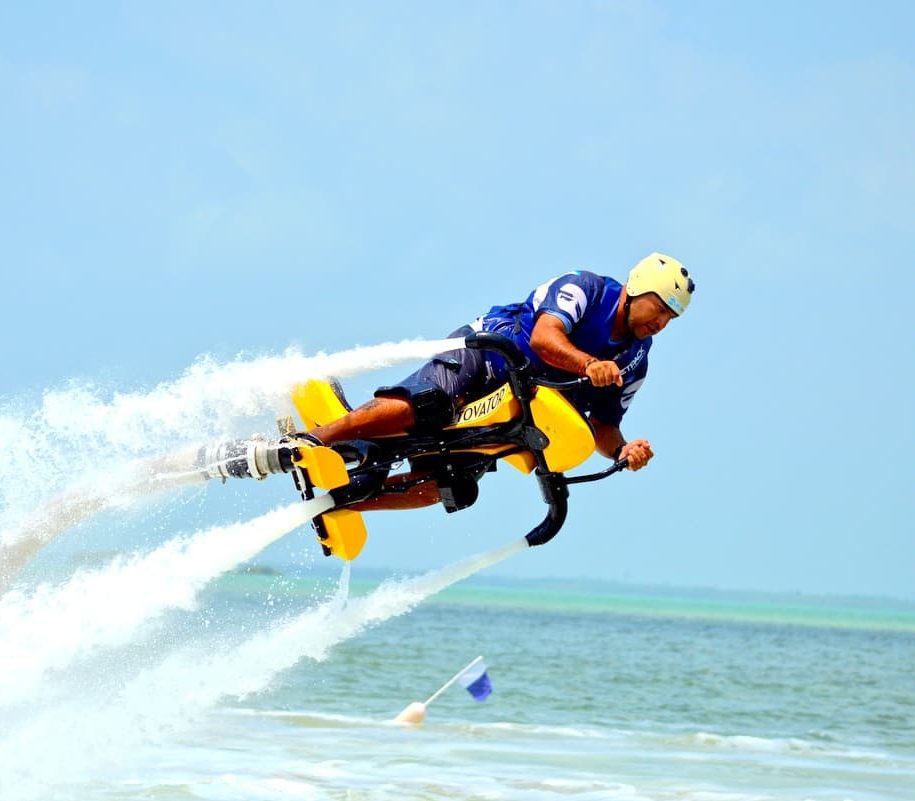
This image is property of dailymom.com.






